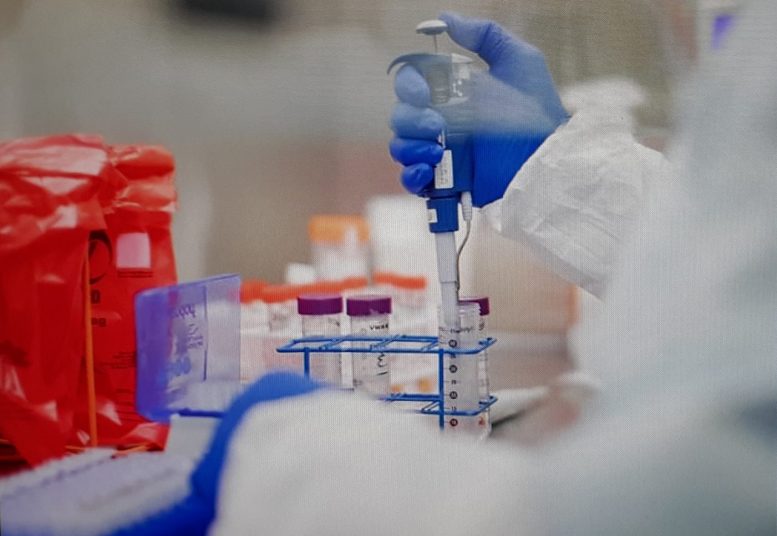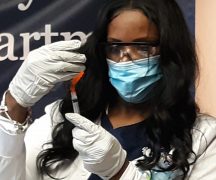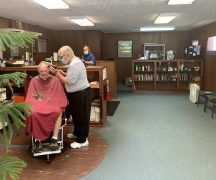By JAN LARSON McLAUGHLIN
BG Independent News
The promises have been plentiful – but the COVID-19 test kits are still lacking, according to local public health officials.
“That’s the most frustrating part. We hear one thing one day,” about mass testing being available. But there still aren’t enough kits to test even the people exhibiting COVID-19 symptoms here, said Wood County Health Commissioner Ben Batey.
“There’s been a lot of promises made, and in my opinion, none of those have come to fruition,” Batey said during the county board of health tele-meeting on Thursday.
There is no way to do large scale testing to identify clusters of the virus – and there is no real indication that will be remedied anytime soon.
“It is going to be us running around trying to put out brush fires,” Batey said.
Health board member Bob Midden talked about the necessity of more testing.
“We need to do mass testing to try to identify as many people as possible who are infected,” he said.
Widespread and rapid testing is needed before restrictions on the public can be reduced, Midden said.
“We all know and recognize the testing capacity is just not there,” said Diane Krill, CEO of the Wood County Community Health Center.
Initially, the health department and Wood County Hospital had hoped to set up a drive-through testing site. But that plan fell apart when the number of tests available here were so few they had to be reserved for hospital patients and those treating them.
Midden mentioned the health department’s experience with mass vaccinations. Batey said that training may come in handy later.
“We’ve done a lot of pandemic drills,” Batey said. “That’s probably going to be our way out of this.”
The health department may have to rely on “pod sites” throughout the county, where groups of people can be tested if the kits become available. Those mobile testing sites could be set up at places like senior centers or large businesses in an attempt to identify and “hot spots” of COVID-19.
But how will it be determined if restrictions should be loosened, Midden asked.
“If you’re not testing comprehensively,” then how can those decisions be made, he said.
Batey shared that frustration, and said area health departments are working with the University of Toledo to create a survey for residents who have experienced symptoms associated with COVID-19. The survey would track where those people live and work.
“So we can start to watch for some of these hot spots to pop up,” Batey said.
Health board member Richard Strow asked about people developing immunity to the virus.
“What are the chances of herd immunity getting us through this?” he asked.
“That’s the million dollar question,” Batey responded. “Until we have the rapid test, we won’t know.”
The board also discussed the financial impact of the pandemic on the health department. Practically all the focus of the health department is now zeroed in on COVID-19.
“We have to anticipate our revenues are going to be down,” Batey said.
But the health department has seen some financial help for its efforts. The biggest help came in the form of a $530,000 grant from the Health Resources and Services Administration. The funding will help with salaries of staff – and possibly for mobile testing if it becomes available.
The health center will be able to serve more people since telemedicine was approved for use. That is particularly good news for people seeking mental health services because of anxiety and depression worsened by the pandemic, Krill said.
“We want to make sure our patients know we’re out there” ready to help, Krill said.
Batey surmised that tele-health may continue to be an accepted way to offer care, even after the pandemic is over.
“I don’t see this going away,” he said of telemedicine. “I see this opening up our capacity.”
Jackie Mears reported on the health department’s WIC nutrition program, which now accommodates people with drive-up services. Because of the financial strain caused by the pandemic, the WIC program has seen a 50 percent increase in new clients, she said.
The staff at the health department is managing the stress and long hours.
“It’s been crazy,” Batey said. “The last month has felt like a year’s worth of work crammed into a month.”
“We’re hanging in there. Our team has been great,” said Director of Nursing Amy Jones. “It’s been a long haul. They are long days, and we’ll keep at it.”
Contact tracing of those testing positive for COVID-19, and those they may have been in contact with, is very time consuming, Jones explained.
“One phone call can take 1½ to 2 hours to cover everything we need to,” she said.
The nursing staff is also responding to many calls from local residents seeking advice about symptoms they are experiencing, Jones said.
“I think these next couple weeks are going to be critical for us,” Batey said. “We’re not out of the woods anytime soon. My worry is that people are going to become complacent.
And that could cause spikes in the spread of COVID-19, he said.
“Now is the most critical time,” Batey said.
“Our lives will never be the same – much like after 911 all of our lives changed,” Batey said.





